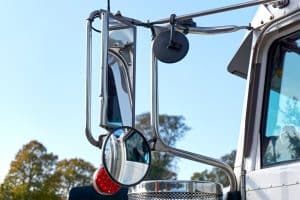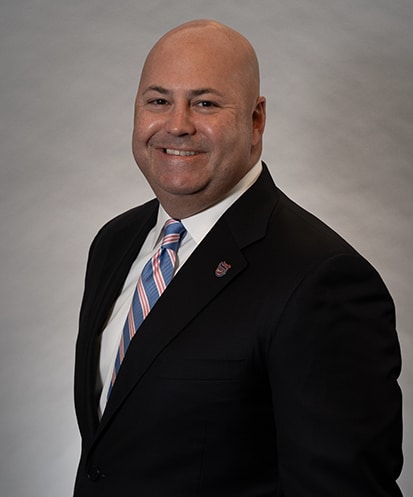What You Should Know About Blind Spots on Trucks
 There are millions of people employed as truck drivers in the United States, and that means millions of trucks on the roads and highways. Trucks are notoriously difficult to maneuver around as they are large and take up a lot of space; when passing them other drivers generally want to move by as soon as possible as it is natural to want to be out of harm’s way of such a large and heavy vehicle.
There are millions of people employed as truck drivers in the United States, and that means millions of trucks on the roads and highways. Trucks are notoriously difficult to maneuver around as they are large and take up a lot of space; when passing them other drivers generally want to move by as soon as possible as it is natural to want to be out of harm’s way of such a large and heavy vehicle.
Because tractor-trailers are so large, it creates spaces around their vehicle that blinds truckers from seeing vehicles in those areas. These are their blind spots. Every vehicle has them, but trucks’ blind spots are large, and are more likely to miss a vehicle traveling beside them. This is one of the major causes of truck accidents with smaller vehicles, and while it is very important for other drivers to be aware of when they are in a truck’s blind spot, it is the trucker’s responsibility to check those areas using their mirrors and other safety methods properly. If you are involved in a collision with a commercial truck while you are in a blind spot,the trucker may be liable for your injuries.
Where are the blind spots on commercial trucks?
Blind spots are the locations not visible to the driver especially when using their wing mirrors or rearview mirrors. The blind spots on a truck are located in similar places as on a sedan, only much larger. The blind spots are located directly in front of the truck, extending forward about 20 feet; to the left of the truck extending backward diagonally the length of one lane; to the right of the truck extending backward diagonally to the length of two lanes; and directly behind the truck, extending backwards about 30 feet.
The reasons the blind spots on a truck are much larger than other vehicles include:
- The truck’s height. As other vehicles are smaller than the truck, it makes it more difficult for the driver to see all the vehicles around them.
- The truck’s length. Trucks can span 70-100 feet long, depending on how many trailers are attached to the cab. This means a very long area where the driver has no visibility.
- The lack of a rearview mirror. It is easy to forget that trucks with a trailer attached cannot use their rearview mirror, or may lack one completely. Unlike those in smaller vehicles, they cannot see directly behind them.
While properly trained truck drivers should be aware of and constantly checking their blind spots, not all drivers are the same, and some may not be so experienced or knowledgeable as to remember to look before making a turn or changing lanes. The blind spots on trucks are often referred to as “no-zones” because they are areas that cars should try and avoid as much as possible.
What are the common causes of truck blind spot accidents?
There are many ways in which you can get into an accident with a truck, but there are certain driver actions that, if the smaller vehicle is in the blind spot, can result in an accident.
Examples of causes of truck blind spot accidents include:
- Following too closely. This can include the smaller vehicle following too closely behind the truck, or the truck following the car in front of it too closely.
- Aggressive driving. As large and unwieldy as commercial trucks are, you would expect them to drive carefully and defensively, but sometimes, a trucker will hit the brakes to try and encourage the driver behind them to back off, or they will cut off another vehicle instead of waiting for more room to change lanes.
- Failure to check blind spots. An obvious and often disastrous mistake, if a trucker fails to check their blind spots before changing lanes, it is very easy to collide with a smaller vehicle in their blind spot.
- Truck driver fatigue. Truckers are notorious for driving long hours and even skipping breaks in order to keep to their tight schedules. This often leads to tired truck drivers who may more easily make mistakes, like not checking their blind spots, or more likely to take risks.
- Impaired driving. Truckers sometimes turn to alcohol or drugs due to the long hours on the road. Justia puts it succinctly, stating, “They may use binge drinking or marijuana to relieve their stress, and they may use drugs such as cocaine or amphetamines to stay awake.”
- Sudden lane changes. Truckers should not make sudden lane changes if they do not have to. If someone stops quickly in front of them, and they believe that changing lanes may avoid a crash, they may do so. However, this can lead to a collision with a vehicle in their blind spot. Truckers must understand how to perform emergency maneuvers.
- Distracted driving. Distracted driving is a common cause of accidents, and when a trucker is distracted, the consequences are often fatal.
What can I do if I’m involved in a truck accident in or near Washington, DC?
If you take all the right precautions of moving around a truck on the road, including giving trucks extra space to turn, avoiding cutting in front of them, allowing trucks the needed space to come to a stop, and avoiding their blind spots as much as possible, then you should hopefully be safe from accidents caused by a truck’s no-zones. Unfortunately, no matter how much you take care, an unsafe truck driver can make mistakes too, and cause an accident due to their own negligence. The injuries from such an accident are often severe, and the collision is more likely to be fatal than accidents with smaller vehicles.
If this is the case for you, then you should contact an experienced attorney for knowledgeable help and guidance regarding your eligibility for financial compensation.
Please contact Paulson & Nace, PLLC through this contact form or by calling our offices today.

Christopher T. Nace works in all practice areas of the firm, including medical malpractice, birth injury, drug and product liability, motor vehicle accidents, wrongful death, and other negligence and personal injury matters.
Read more about Christopher T. Nace.
